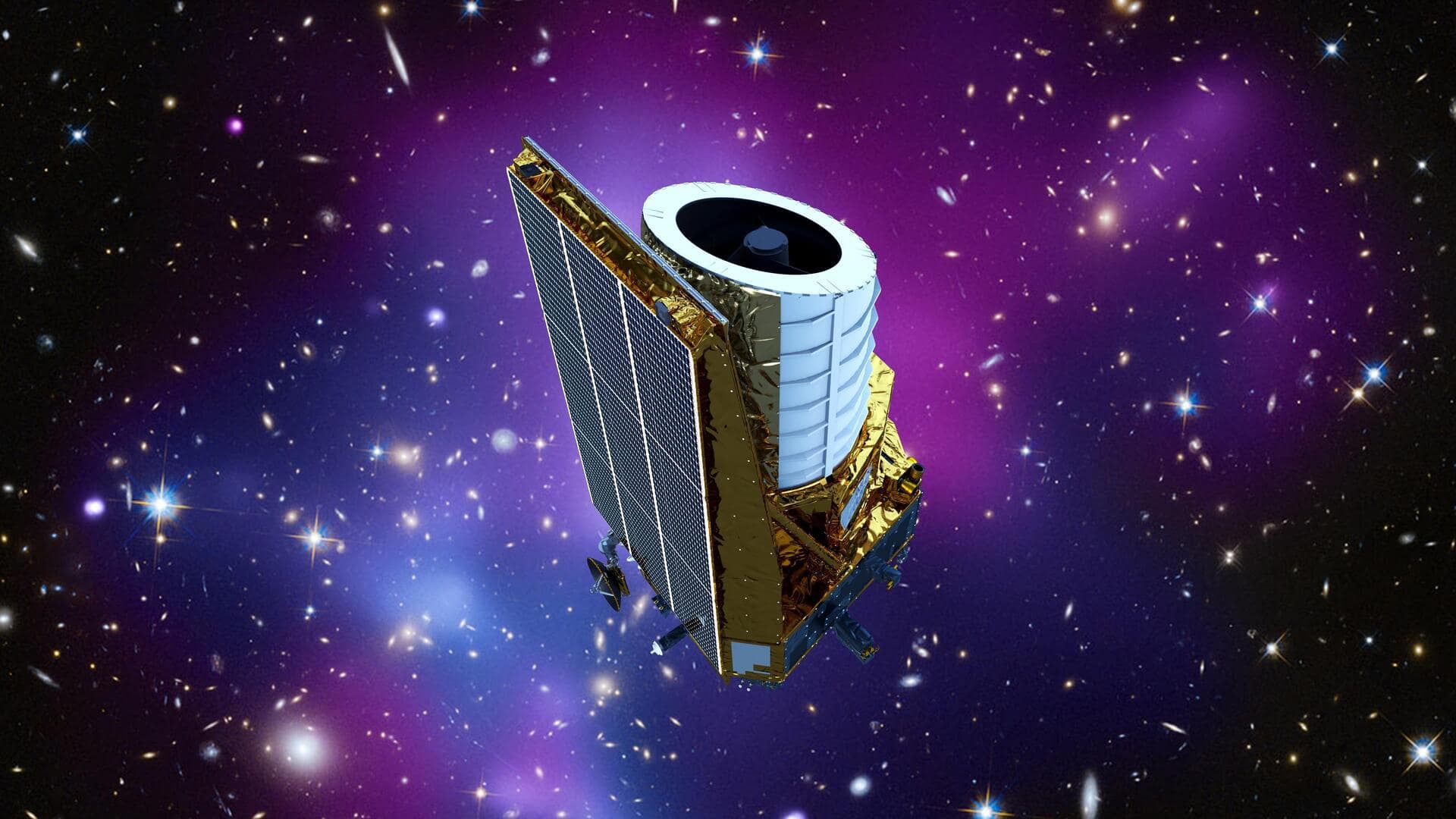
Everything about ESA's Euclid mission to launch on July 1
What's the story
We are a week away from the launch of European Space Agency's (ESA) Euclid mission, which is scheduled to take off on July 1 to explore the dark side of the cosmos. The 2,100kg space telescope will specifically study the mysterious components of the universe- the dark energy and dark matter which have not been explored before. Here's everything to know about the mission.
Dark energy
What are dark energy and dark matter?
Dark energy discovered in 1998 is believed to play a critical role in the expansion of the universe. Dark matter is claimed to provide the universe with 80% of its mass and is the prime component that holds galaxies together. So far, astronomers were only able to study dark energy and dark matter based on the effect they had on stars and galaxies.
Objectives
Euclid can generate 4x sharper images than ground-based surveys
Euclid will create the largest and most accurate 3D map of the universe, per ESA, producing four times sharper images than ground-based observatories. The space telescope will study billions of galaxies, across more than a third of the sky. Interestingly, it will be able to look into the past 10 billion light-years of the evolution of the universe.
Location
The telescope will lie about 1.6 million km from Earth
The Euclid telescope will be positioned about 1.6 million km from Earth, specifically at the L2 Lagrange point, facing the Sun. The Earth, Moon, and Sun will always lie behind the observatory. From this point, Euclid will be able to see the universe like never before. Interestingly, it will share this location with other spacecraft including the famous James Webb Space Telescope (JWST).
Payloads
Euclid is about 14.7 feet tall
Estimated to have cost €1 billion, the Euclid space telescope will carry two main instruments for carrying out its science objectives. The onboard equipment will include a visible imager (VIS), and the Near-Infrared Spectrometer and Photometer (NISP). Euclid measures about 14.7 feet tall and 10.2 feet wide. It's much smaller than JWST—the entire observatory measures about 26 feet in height.
Launch
The mission will launch aboard a SpaceX Falcon 9 rocket
If everything goes according to plan, the Euclid mission will take off aboard a SpaceX Falcon 9 rocket from Cape Canaveral in Florida on July 1 at 8:41pm IST. The spacecraft is expected to separate from the rocket about 42 minutes after launch and is expected to send its first signal to Earth about 46 minutes from the time of liftoff.
Operations
Euclid will take about a month to reach its destination
Euclid will take about a month to reach its target destination around the L2 point. Between one to three months following the launch, the telescope will be subjected to several calibrations and performance tests in space to gear up for conducting science investigations, says ESA. Only after that will the mission begin its survey of the vast universe.
Information
How to follow the launch of the mission?
The estimated lifetime of Euclid is six years. You can track the live broadcast of the mission's launch through ESA's official social media handles. In case the mission does not launch on July 1, ESA has a backup takeoff date on July 2.